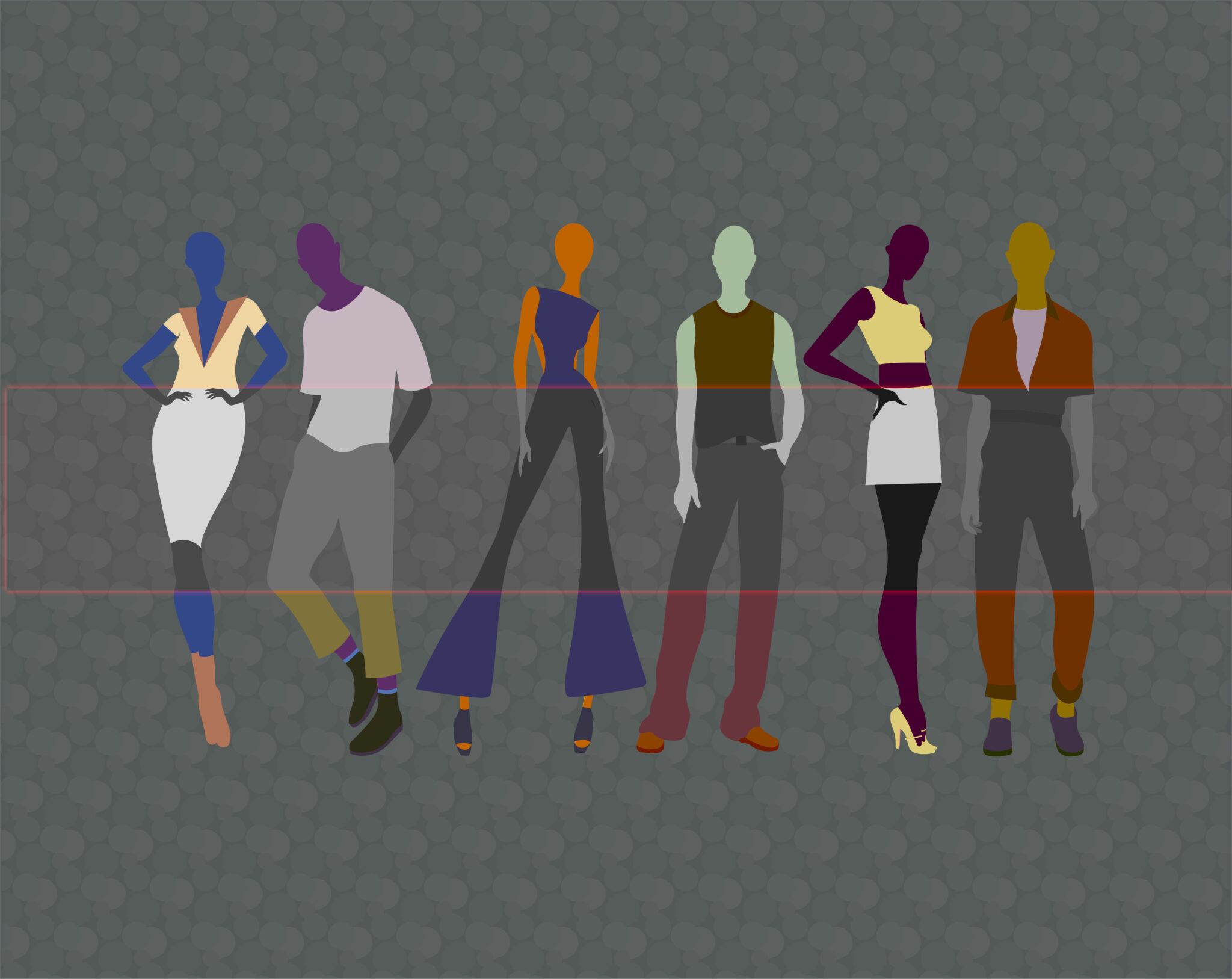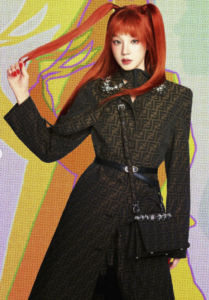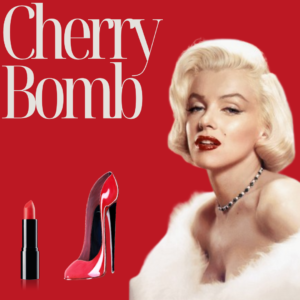GRAPHIC DESIGN Safa Kubti
Coming from an industry heavily influenced by colour, I wanted to know how people with colourblindness experienced fashion from their point of view. I invited Ramy Boles: a 24-year-old medical student at the University of Toronto, and Dan Barake: a 21-year-old mathematics student at Queen’s University, to discuss how they each interact with and overcome challenges in the industry. Boles discovered he was colourblind in the 8th grade after struggling with his sister’s science project involving a colour test, and Barake when his kindergarten teacher questioned his drawing of pink elephants and grey pigs.
C: Can you explain what type of colourblindness you have?
R: I have protan-type colourblindness. Essentially, everyone has rods and cones in their eyes, but one of my cones is shifted, so I receive extra green light and not enough red light. Greens, yellows, oranges, reds, and browns all appear in similar shades. Reds appear darker than what the typical person sees, so if there was red writing on a black background一forget it. I also struggle with purples, blues, pinks, and greys.
D: I have red-green colourblindness and so do all the guys on my mom’s side. The best way to explain it is the traffic light analogy: traffic lights are red, yellow, and green, but I see them as red, red, and white. Things that are green appear more grey; while greens, reds, and yellows look very similar.
C: In what ways has your colourblindness affected your relationship with fashion?
R: I’ve never really been involved in the fashion world because of my colourblindness: it’s a confidence issue. I can never comment on what somebody is wearing because I never know if what I’m seeing is the same as everyone else. I’m a much quieter person when it comes to voicing my opinions.
D: I’ve always admired fashion, but the combination of being colourblind and hitting puberty was a roadblock when it came to looking fashionable. When people my age began developing their style, I still didn’t know what looked good together. I grew up not caring about fashion as much as others, so much so, that people introduced me as the kid who didn’t know how to dress.
C: How has it impacted your personal style and appreciation for fashion?
R: I appreciate people who have good style because I can always rely on them. I try to avoid patterns because people have pointed out my questionable combinations in the past. It’s kind of sad, but it’s a good day if I am not noticed, because that just means I didn’t throw something tacky together. I use accessories to my advantage because it enables me to appear stylish without having to know my colours well, which is why I’ll always wear watches and glasses.
D: It’s made me want to wear less colourful and sophisticated clothing, because if I do, I know I’ll be judged more harshly for the colours I wear. So I strive for “streetwear casual.”
C: Can you explain how you choose your clothing day-to-day?
R: I experimented a lot with my clothing growing up since I lived with my family, but it wasn’t until I moved out for university that I realized how dependent I was on people dressing me. In my first year of medicine, I sent pictures of outfits to friends, but that never worked, because photos didn’t do justice in terms of shades. I then bought colour coordinated hangers, but that became messy. For two years now, I’ve been shopping with a friend at the beginning of each year and recording videos of him explaining all the combinations of outfits that go well together, including shoes and belts. The only struggle is that any time I go shopping, we have to re-film the video.
D: In elementary and high school, my mom often pointed out that my outfits didn’t match, so when I got to university and noticed people making an effort to look nice, I began doing the same and confided in my roommates.
C: What do you look for when shopping for clothing?
R: The number one rule any colourblind person would agree with is: never go shopping by yourself. I always go with friends, or if possible, my mom. I’m a tall guy, so I require things to fit a certain way, and the fabric to be breathable in order to prevent sweating. Other than that, I don’t care about colour.
D: I look for subtle patterns that are monochromatic because they’re easy to match with my wardrobe.
C: What are ways you think the industry can be more accommodating to people with colourblindness?
R: It sounds silly, but labelling colours would help a lot. I know you wouldn’t wear blue and purple together from memorization, but I wouldn’t be able to recognize what’s blue and what’s purple, and think it should be labelled near the barcode. I also find mannequins convenient because I know whoever put them together has good taste, so it would be thoughtful to have more mannequins with different mixes and matches that I can mimic, rather than one combination.
D: Since 10 per cent of male shoppers are colourblind, I think designers need to make garments with more textures and shapes, rather than colour. Many colours look the same to me so I want to be able to rely on patterns.
C: Ramy, I know you attended your first fashion show recently. Can you describe that experience?
R: I was more intrigued by what people were wearing in the audience than on the runway. It was fascinating seeing people rock outfits with such confidence, especially since one in 10 guys in that room were colourblind and you couldn’t tell who. I don’t know if there’s a way to make fashion shows colourblind friendly, but you don’t know what you’re missing until you see what everyone else sees. There’s videos of people putting on colourblind glasses and tearing up, but until I put those on, the world as I see it looks wonderful.
I’m thankful to have had the opportunity to speak with Ramy and Dan about their experiences overcoming challenges in the industry as individuals with colourblindness. I hope their voices continue to be heard so that we may explore ways to help ease the anxiety many have towards colours and make fashion just as enjoyable as it is inclusive.
























